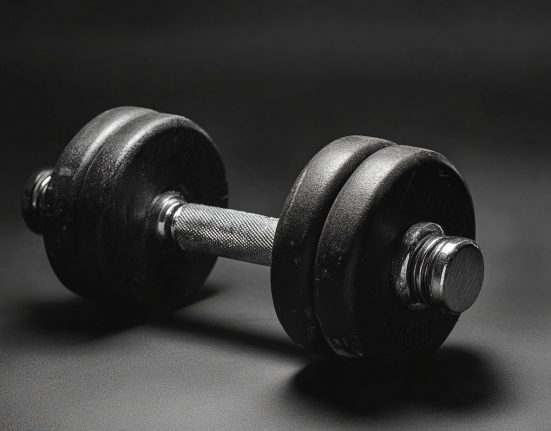Walking is a fun and easy form of exercise that’s beneficial for both physical and mental health. It can be done outdoors, indoors, or on a treadmill on an incline for a greater calorie burn.
For overall health and disease prevention, the Physical Activity Guidelines for Americans recommends that adults get at least 150 minutes of moderate-intensity physical activity, 75 minutes of vigorous-intensity aerobic physical activity, or an equivalent combination, each week.
The average number of calories that a person burns during walking varies, as it is dependent on different factors such as weight, pace (walking speed), and distance. For example, on average, a 140-pound person would burn 64 calories per mile while walking at a moderate pace of 2.8 miles per hour (mph), whereas a 200-pound person would burn 87 calories walking the same distance and pace.
Age and the type of terrain someone walks on (i.e. a flat sidewalk vs. a hill) can also affect the total amount of calories burned as well.
How Pace, Weight, and Distance Factor In
Your pace, distance, and weight determine how many calories you burn during walking. The Compendium of Physical Activity, a resource many researchers use to estimate and classify the energy cost of human physical activity, lists various paces of walking that can be used to calculate overall calorie burn.
Based on the walking classifications from the Compendium of Physical Activity, a 170-pound person would burn approximately 80 calories walking one mile at a slow pace (2.0 mph); 74 calories walking one mile at a moderate pace (2.8 mph); 83 calories walking one mile at a brisk pace (3.5 mph); or 91 calories walking one mile at a very brisk pace (4 mph).
Pace and distance can be adjusted over time depending on your movement goals. For example, if you’re new to walking for physical activity and you have a goal of progressing to a brisk level of walking, it is recommended you start slow and gradually increase your step count and pace over time.
How to Track Calories Burned While Walking
To track the calories you burn while walking, there are a number of different tracking tools you can wear or use.
Your phone may also have a built-in step tracker that tracks distance and calories burned, which can connect to a fitness tracker.
Another option is an electronic pedometer, which is a portable movement tracker that tracks your steps as you walk. Some pedometers also measure total distance walked, heart rate, and calories burned. To ensure a pedometer has the ability to track calories, check the manufacturer details before purchasing.
As there are many trackers that measure calories burned and total steps, it all comes down to personal preference and what you want to keep track of.
How to Burn More Calories While Walking
If you want to increase your calorie burn while walking, there are a couple of effective methods and tips that can help boost your burn. These include:
- Walking at a brisker pace, which burns more calories than walking at a slow or moderate pace.
- Walking up hills or increasing the incline on the treadmill. Compared to walking on a flat surface, walking on a hill or at an incline on the treadmill (a setting that mimics walking on a hill) increases the amount of energy we exert to burn more calories.
- Taking the stairs whenever possible. Going up or down the stairs increases your overall steps, which burns more calories.
- Incorporating a few intervals of sprints or jogging into your walk will significantly increase your pace and result in more calories being burned.
- Making an effort to walk more throughout your day. Park at the far end of the parking lot, go for a lunchtime stroll, or walk to nearby stores or appointments instead of driving.
- Listening to your favorite music while walking can up the intensity and make walking more fun.
Another simple way you can burn more calories throughout the day and get more steps is to stand up during the day. Try talking on the phone while pacing back and forth in your home. The muscles in your back and legs will work harder to burn more calories as you pace.
Why Walking Is Good Exercise
Walking is a good form of exercise because it helps improve your physical and mental health. Getting enough physical movement every day can improve brain health, strengthen bones and muscles, and reduce your risk of chronic diseases such as cancer, heart disease, or diabetes. Physical movement such as walking also helps improve sleep quality, memory, and focus. It also can help lower blood pressure, reduce arthritis pain, maintain a healthy weight, and reduce your risk of osteoporosis.
For mental health, walking can help reduce symptoms of depression and anxiety. Research has also shown that both moderate and intense walking can help improve mental health and reduce the effects of negative emotions while also helping lower blood pressure.
You’ve also likely heard this common piece of advice: walk 10,000 steps a day. While that number was recommended historically, a growing body of recent research has found that we don’t have to walk 10,000 steps per day to reap health and longevity benefits. Studies in both men and women have found it’s more important to strive for a greater number of steps per day. For instance, one study found that middle-aged Black and white adults who walked a moderate amount of 7,000-9,999 steps per day had a 50% to 70% lower risk of all-cause mortality than study participants who walked under 7,000 steps per day.
In summary, recent research suggests that as long as you aim to increase your total daily steps above a sedentary level (5,000 steps or less) to a more moderate level (7,000-9,999 steps) each day, you will have a higher chance of longer life expectancy.
A Quick Review
To burn more calories walking, lace up your sneakers and hit the pavement! Walking is an effective and easy form of exercise that burns calories and improves your overall health. To make walking even more fun and enjoyable, go for a walk with a friend, with your dog, or explore a new neighborhood or hiking route.
Walking has been shown to have many health benefits, from reducing symptoms of depression and anxiety to reducing your risk of various diseases and improving sleep quality.
To reap the most benefits for your health and longevity, aim to walk at least 7,000 steps per day.
If you are new to walking for physical activity, you may benefit from speaking with a healthcare provider to help get you started. A healthcare provider can speak with you about your medical and fitness history to recommend how much walking you should start out with. You can always start off at a slow or moderate pace, or walk for shorter distances. As you walk regularly, you’ll be able to gradually increase your pace, steps, and distance to help you meet your movement and health goals.









